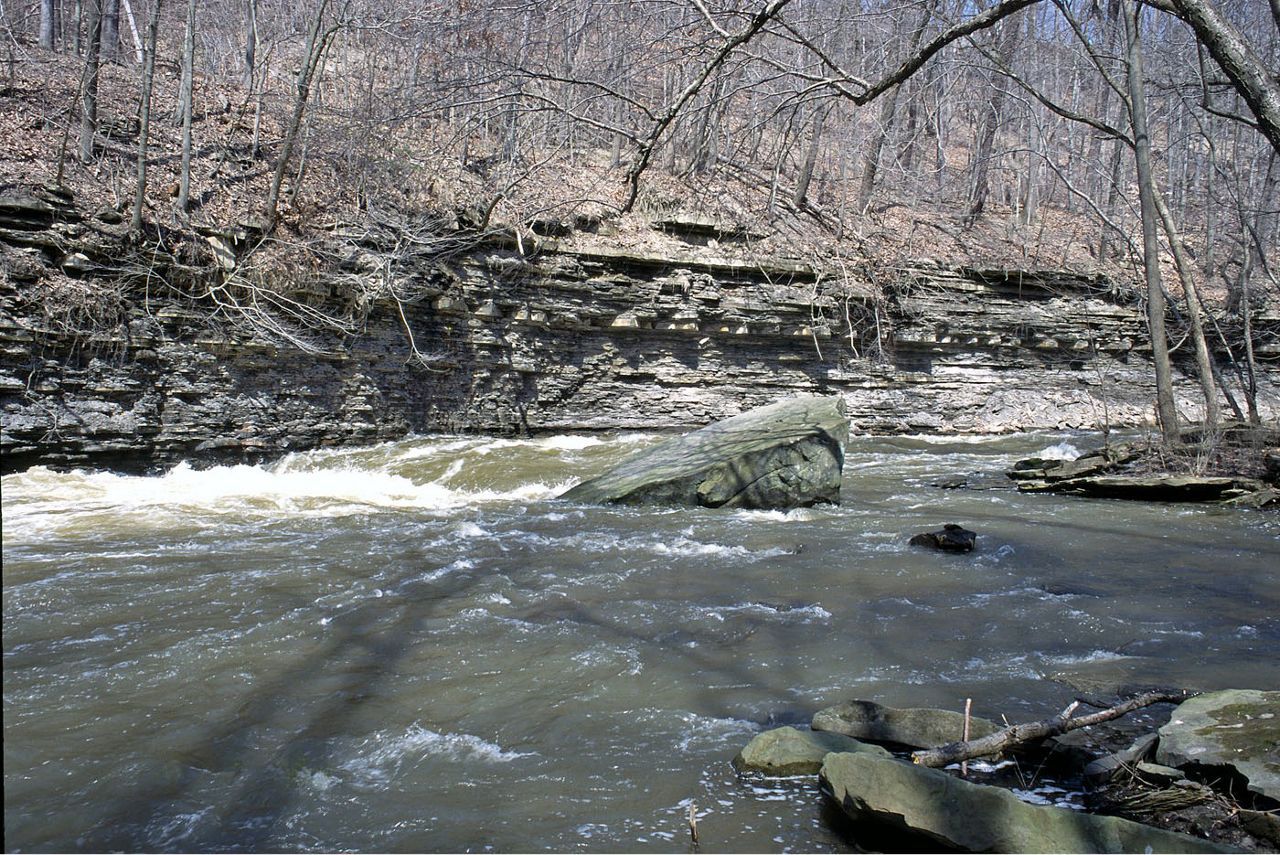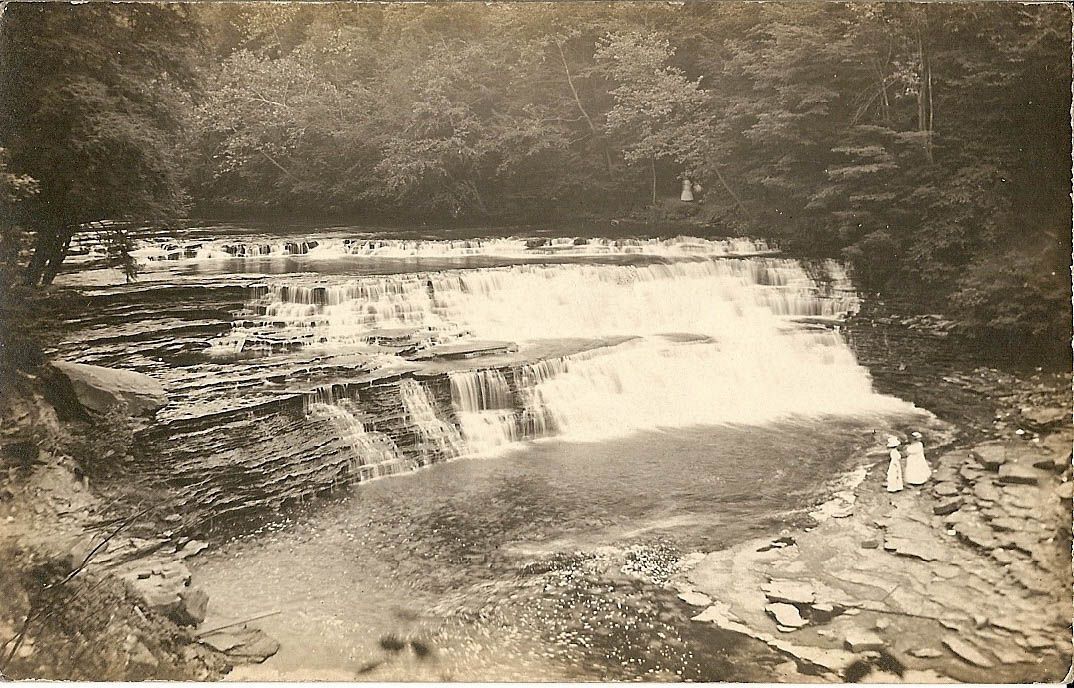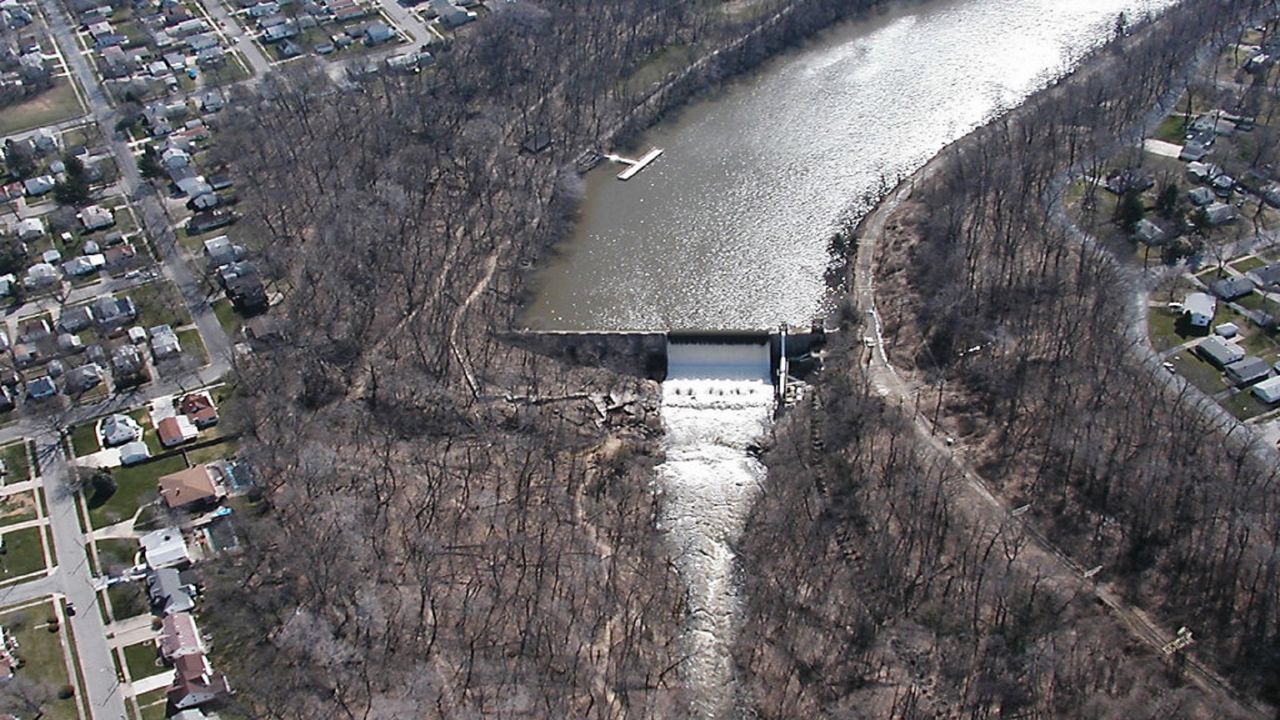AKRON, Ohio – A project to remove the Gorge Dam took a big step closer to realization Friday with the state announcing a $25 million contribution to the estimated $130 million needed to take the dam down.
Located in Summit Metro Parks’ Gorge Park, the dam spans the Cuyahoga River between Akron and Cuyahoga Falls. It was constructed in 1913 to provide hydroelectric power, which ended by 1958, officials said.
A 60-foot-high, 420-foot-wide chunk of concrete, the dam is believed to be the final impediment in allowing the Cuyahoga River to return to optimal health, officials said.
The state’s contribution will come from a settlement Ohio was awarded as part of a polychlorinated biphenyl (PCB) enforcement case then-Attorney General Mike DeWine filed against Monsanto in 2018, according to a joint press release from the governor’s office and the Ohio EPA.
“Improving water quality across the state has been a key focus of my administration, and generations of Ohioans will benefit from the improvements that will be realized by removing the Gorge Dam,” DeWine said.
“This project will return the Cuyahoga River to a free-flowing river from Kent to the mouth of Lake Erie, will vastly improve water quality in the Cuyahoga River, and will pave the way for recreation, tourism and economic development opportunities in this area," he said.
The Ohio PCB Advisory Board, which was formed to distribute the Monsanto settlement money, recommended contributing $25 million toward Gorge Dam removal, Ohio EPA said.
“This project has been the focus of efforts by so many local, state and federal partners for decades,” said Ohio EPA Director Laurie A. Stevenson, thanking the PCB advisory board and several other agencies for supporting Gorge Dam removal. “Providing this state-match funding from the Monsanto settlement will enable us to make the completion of this significant project a reality.”
Ohio EPA and the Ohio Lake Erie Commission have partnered with the U.S. EPA on the project, along with the cities of Akron and Cuyahoga Falls, Summit County and Summit Metro Parks.

In the past few years as the project has inched closer to fruition, “Free the Falls” has become a rallying cry for northeast Ohioans who wish to see Cuyahoga River water quality continue to improve.
Taking down the dam is also expected to positively impact economic development in the region, opening about 2.5 miles of continuous Class III to Class V whitewater that’s expected to draw kayaking enthusiasts and support water-recreation businesses, officials said.
More than $100 million of the project’s total cost will be spent removing the sediment that has collected behind the dam over the decades, according to the U.S. EPA, which gave a presentation to a room packed with residents in early November.
A U.S. EPA study conducted between 2009 and 2011 found the sediment non-toxic in a 1.5-mile pool behind the dam, which means it can be removed without requiring confined disposal, the agency said.
Between now and February, the sediment disposal site will be cleared of vegetation to prepare a final design for sediment management by spring of 2023, U.S. EPA representatives said.
Sediment removal will take about two years, followed by dam removal, which is planned for 2025-2026, the agency said.
Removing the dam also is expected to help possible delisting of the Cuyahoga River as an Area of Concern in the future, the EPA said.










